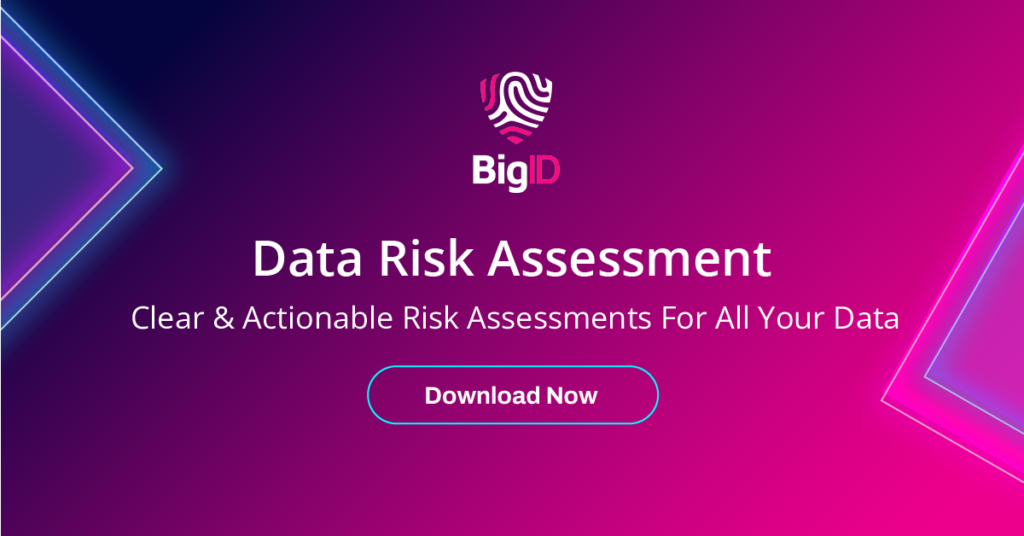Managing Sensitive Data Exposure Has Never Been Harder
As a security team, you’ve probably spent the last few years ensuring that every corner of the cloud is secured to improve your cloud data security posture. On top of this, incorporating AI in the workplace has opened up a new set of security issues with the data it uses to train.
In the midst of this, It’s easy to forget about your on-prem, legacy environment. Surprisingly, around 40% of data in most enterprises remain on prem, residing in locations like Server Message Block (SMB) file share systems.
Managing access and privileges across both cloud and on-prem – whether that’s analytics, corporate, or AI data – is difficult. Using a bunch of tools to do this inevitably leads to a fragmented approach, making it vulnerable to potential breaches.
Access Governance Controls Across Hybrid Environments
With BigID, identify and remediate unwanted overexposure across the cloud and on prem to give your security team a more holistic and easy way to manage access across the entire environment. Identify sensitive, critical, regulated, and personal data that is exposed internally and externally. Find users and groups with unfettered access to sensitive data. Then proactively reduce overexposure by kicking off remediation workflows to mitigate excessive and unwanted access.

Mitigate Unwanted Exposure Across Data, Anywhere
Pinpoint Your Most Sensitive & Valuable Data
Discover, classify, and inventory your most important and valuable data across the entire environment. Pinpoint sensitive, personal, critical, and regulated data, including analytics and data used as training sets for generative AI. Score and prioritize critical data risks by severity level according to sensitivity, location, accessibility, and more.
Identify Overexposed Data Across Hybrid Environments
Understand overexposed sensitive or critical data – both internally and externally across the cloud and on prem, including AWS S3, GDrive, GCS, Sharepoint, OneDrive, SMB, and Box, and more. Pinpoint overexposed sensitive data to understand where your biggest risks lie and prioritize remediation accordingly. Enable the right data risk mitigation activities for regulatory purposes requiring significant open-access requirements.

Spot Users & Groups with Too Much Access
Spot over-privileged users and groups across the enterprise, including third parties and remote workers, that have access to sensitive data across the cloud and on prem. Understand which individuals or functional groups have unfettered access to high-risk sensitive or critical data across your organization’s data environment to prioritize risk reduction efforts.
Manage Remediation – Your Way
Enable remediation your way – centralize management through BigID or decentralize workflows across the right tools and people to reduce exposure. Manage data remediation activity across all your data risks and vulnerabilities, including data deletion, encryption, masking, and more. Create policies around specific types of data and trigger remediation alerts and workflows. Maintain an audit trail of your remediation activity for compliance.
What it Means for Your Security & Risk Reduction Goals
- Enhance Your Visibility: Easily identify who has access to sensitive, personal, regulated, and critical information, to get transparency into unwanted exposure.
- Shrink Your Attack Surface: Actively pinpoint excessive access, carry out remediation, and markedly shrink the potential attack surface from a bad actor.
- Enable Security To Work Efficiently: Simplify the process of understanding who’s accessing sensitive data and empower your security teams to quickly respond to exposure.
- Meet AI Compliance: Effectively carry out access governance and controls around AI training data to meet regulatory compliance requirements.
- Achieve Zero Trust: Layer in a data-centric strategy to Zero Trust by pinpointing sensitive data internally and externally accessible to unwanted parties and actively reducing exposure.
- Mitigate Insider Risk: Understand unauthorized internal exposure, access, and use of sensitive data and kick remediation against it.
- Reduce the Chance of a Breach: Reduce the chance of the breach by closing the gap between detection and response around excessive access or overexposed data.
Want to learn more about how we can enhance access intelligence, visibility, and governance to proactively reduce unwanted exposure? Set up a 1:1 with one of our data security experts today!



